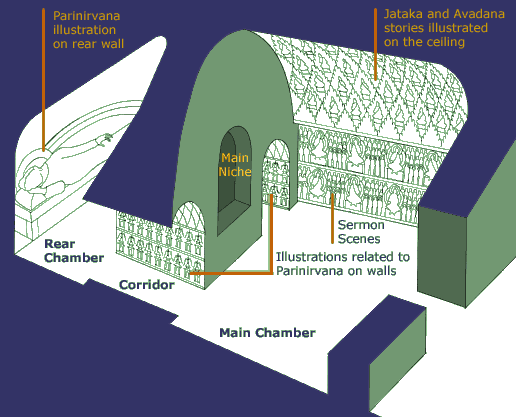|
|
|
|
|
|
|
|
 |
|
|
Architecture, Decoration, and Function
In a Kuchean Buddhist cave, the architecture and decoration work together to celebrate the life and teachings of the Buddha. The caves have a large, vaulted chamber in front and a smaller rear chamber. Devotees would enter the main chamber and see a sculpture of the Buddha in a large niche in the back that serves as the focus of the interior. (Sadly, none of these sculptures survives today at Qizil.) The walls are filled with paintings of the Buddha's teachings. Devotees would walk into the rear chamber, which featured a scene showing the parinirvana (the great demise of the Buddha). These spaces are linked by two tunnel-like corridors on the sides. Episodes from the life of the Buddha, or sermon scenes, similar to the fragments displayed in this room, traditionally decorated the side walls of the main chamber. The vaulted ceiling is usually painted with scenes from jataka stories, which recount the deeds of the Buddha's many past lives, or avadana stories, parables or allegories concerning the doctrine of karma, in which one's deeds are rewarded or punished in the next lifetime. At Qizil, each tale is framed in a uniquely Kuchean diamond-shaped pattern. All the paintings at Qizil illustrate the beliefs and teachings of Buddhism. The murals of the main chamber give an almost "biographical" account of the Buddha's achievements during his lifetimes; the parinirvana scene in the rear chamber symbolizes the Buddha's entry into his nirvana (complete enlightenment), the ultimate goal of all Buddhists.
|